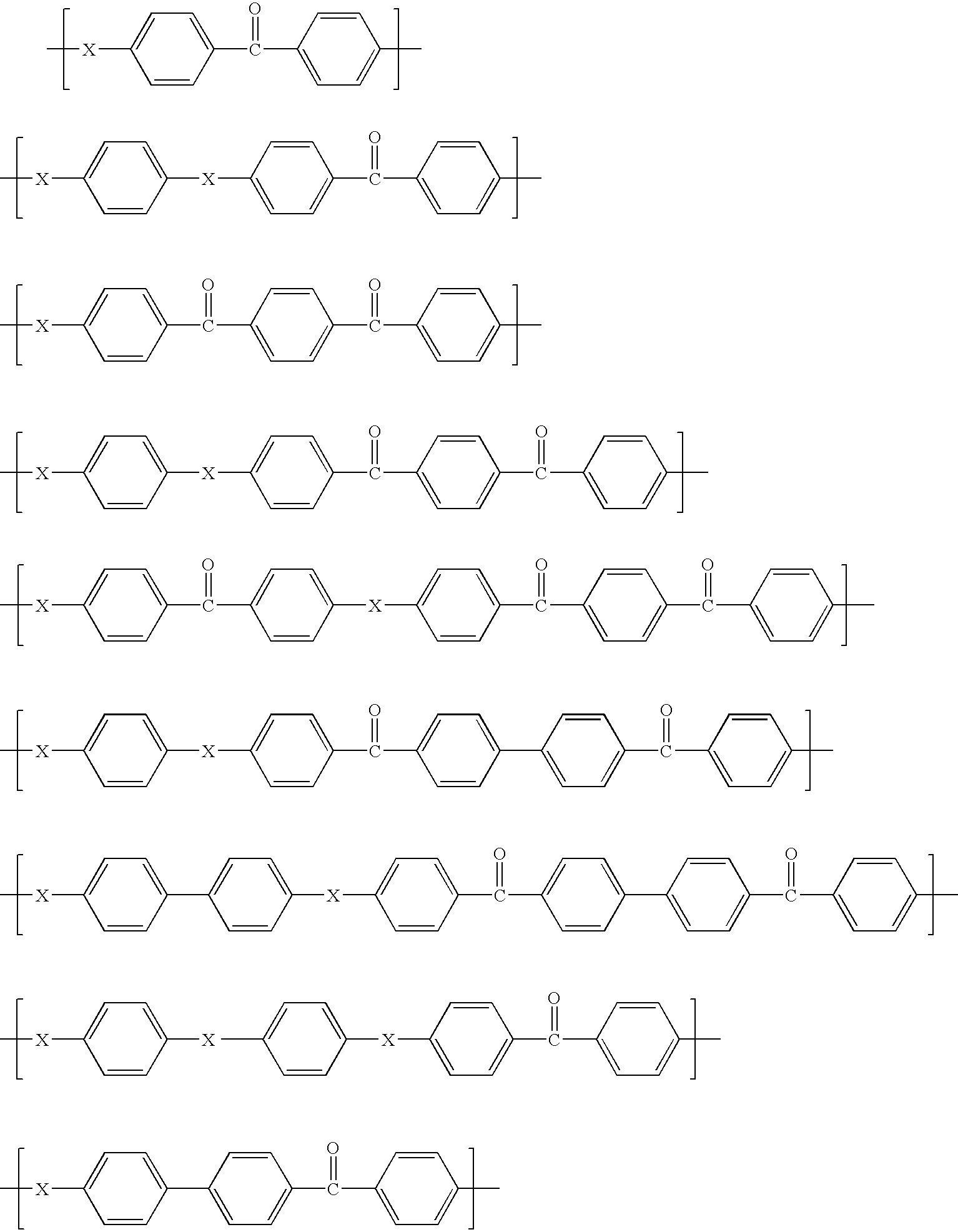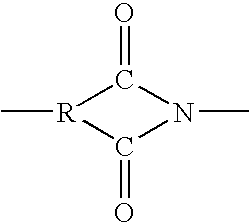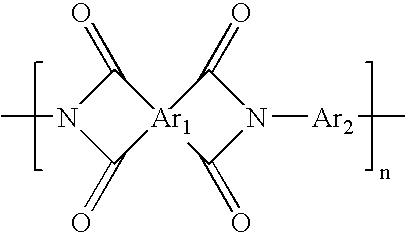Functionalized porous poly(aryl ether ketone) materials and their use
a technology of functionalized porous poly and aryl ether, which is applied in the direction of lamination, separation process, domestic applications, etc., can solve the problems of limited chemical, solvent and thermal resistance, large and non-uniform pore size distribution, and difficult to meet target application requirements, etc., to achieve cost-effectiveness, industrial feasibility, and simple structure
- Summary
- Abstract
- Description
- Claims
- Application Information
AI Technical Summary
Benefits of technology
Problems solved by technology
Method used
Image
Examples
analytical example 1
[0111]A sample of annealed PEEK film, 1 g, (film thickness 110 μm) was placed into 100 ml of neat monoethanolamine kept at 120° C. After 4 hours the PEEK film was retrieved from the solution, washed sequentially with water and isopropyl alcohol, and dried at 50° C. under vacuum overnight. The functionalized PEEK film exhibited an advancing water contact angle of 81° and a receding water contact angle of 0°. In comparison, the precursor PEEK film exhibited an advancing water contact angle of 89° and a receding contact angle of 64°. The result demonstrates that functionalization with monoethanolamine leads to improved wettability.
analytical example 2
[0112]A sample of annealed PEEK film, 1 g, (film thickness 110 μm) was placed into 100 ml of neat amine-terminated silicone fluid, GP4, manufactured by Genesee Polymers Corporation, which was kept at 120° C. After 4 hours the PEEK film was retrieved from the solution, extensively washed with ethanol and dried at 80° C. under vacuum overnight. The GP4 silicone functionalized film exhibited an advancing water contact angle of 110° and a receding contact angle of 71°. In comparison, the precursor untreated PEEK film exhibited an advancing water contact angle of 89° and a receding contact angle of 64°. The result demonstrates that functionalization with siloxane increases surface hydrophobicity.
analytical example 3
[0113]A sample of annealed PEEK film, 1 g, (film thickness 110 μm) was placed into 100 ml of neat amine-terminated silicone fluid, GP6, manufactured by Genesee Polymers Corporation, which was kept at 120° C. After 4 hour treatment, the PEEK film was retrieved from the solution, extensively washed with ethanol and dried at 80° C. under vacuum overnight. The thus functionalized film exhibited an advancing water contact angle of 107° and a receding contact angle of 73°. In comparison, the precursor untreated PEEK film exhibited an advancing water contact angle of 890 and a receding contact angle of 64°. The result demonstrates that functionalization with siloxane increases surface hydrophobicity.
PUM
| Property | Measurement | Unit |
|---|---|---|
| temperature | aaaaa | aaaaa |
| temperature | aaaaa | aaaaa |
| boiling point | aaaaa | aaaaa |
Abstract
Description
Claims
Application Information
 Login to View More
Login to View More - R&D
- Intellectual Property
- Life Sciences
- Materials
- Tech Scout
- Unparalleled Data Quality
- Higher Quality Content
- 60% Fewer Hallucinations
Browse by: Latest US Patents, China's latest patents, Technical Efficacy Thesaurus, Application Domain, Technology Topic, Popular Technical Reports.
© 2025 PatSnap. All rights reserved.Legal|Privacy policy|Modern Slavery Act Transparency Statement|Sitemap|About US| Contact US: help@patsnap.com



